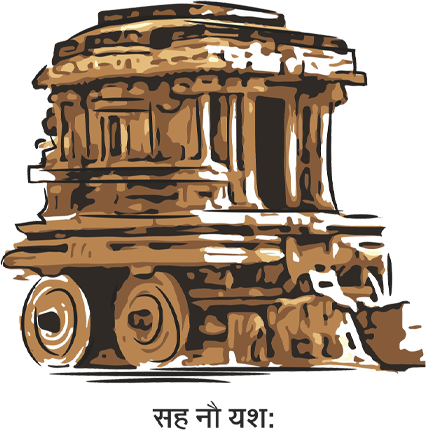
What to see
Enchanting Delhi
Delhi, the capital city of India, is a place where ancient history and modern life blend seamlessly. It's known for its rich heritage, vibrant culture, and a plethora of tourist attractions that cater to all interests.
The history of the city goes back many centuries with Delhi long being associated as the place of the capital city of the Pandavas- Indraprastha. During the medieval period Delhi saw the rise of many fortified settlements, the remains of which can still be identified even today such as Qila Rai Pithora, Purana Qila, Siri, Tuglaqabad, Jahanpanah, Firozabad and Shahjahanbad.
Delhi today is a city of international standing and significance, holding a beautiful balance between preserving the old and the sacred while creating new infrastructure meeting global standards.
There are 3 World Heritage Sites in Delhi
-
Qutb Minar and its Monuments:Rising to a height of 72.5 m, the Qutb Minar has a diameter of 14.32 m at the base and about 2.75 m on the top. The foundation of the Qutb Minar was laid by Qutbuddin Aibak, the first Sultan of Delhi, in 1199 CE. More storeys were added by his successor, Shamsuddin Iltutmish. Around the year 1368 CE, during the rule of Feroz Shah Tuglaq, the uppermost storey which was damaged, was later replaced by two more storeys. This iconic landmark boasts intricate carvings and inscriptions, offering a glimpse into Delhi's medieval past. The site was inscribed on the world Heritage List in 1993.
-
Humayun's Tomb: The Tomb is considered as the first distinct specimen of the Mughal funerary architecture, greatly inspired by the Persian style and a forerunner of the more famous Taj Mahal of Agra. It was built on the banks of river Yamuna by the widow of Humayun, Hamida Banu Begam in 1569 CE. The Tomb was inscribed on the World Heritage list in 1993.
-
Red Fort Complex: The Mughal emperor Shah Jahan transferred his capital from Agra to Delhi and laid the foundation of the Red Fort in 1639. The magnificent fort showcases stunning Mughal architecture and houses several museums, including the renowned Indian War Memorial Museum. The Red Fort was inscribed on the World Heritage List in 2007.
Museums in Delhi
Welcome Distinguished Delegates and Families,
We are honoured to welcome all esteemed delegates, along with their spouses and family members, as they embark on an enriching journey through some of the India's most significant cultural and historical landmarks.
-
Pradhanmantri Sangrahalaya: The Pradhanmantri Sangrahalaya is a museum dedicated to the Prime Ministers of India. This state-of-the-art museum offers a comprehensive look into the lives, contributions, and legacies of India's leaders. Here, one can gain deep insights into the political history and development of India through interactive exhibits and multimedia presentations. It is an ideal place to understand the vision and efforts of those who have shaped modern India.
-
National Museum: The National Museum is one of the largest and oldest museums in India. This treasure trove of art and history houses an extensive collection that spans over 5,000 years, including artifacts from the Indus Valley Civilization, exquisite sculptures, ancient manuscripts, and rare coins. The museum offers a unique opportunity for families to witness the rich cultural heritage of India and appreciate its diverse artistic traditions.
-
Rashtrapati Bhawan Museum: A visit to the Rashtrapati Bhawan Museum promises to be a memorable experience. Located within the presidential estate, this museum provides a glimpse into the lives of India's Presidents, the history of the Rashtrapati Bhawan, and its architectural grandeur. Through a variety of exhibits, including photographs, documents, and personal belongings of past Presidents, one will gain a deeper appreciation for the history and functioning of the highest office in the land.
-
Rajghat (Mahatma Gandhi): A journey to Delhi is incomplete without paying homage at Rajghat, the memorial dedicated to Mahatma Gandhi, the Father of the Nation. Set amidst serene gardens, this solemn and reflective site marks the final resting place of Mahatma Gandhi. It is a place of pilgrimage for those who seek to honour his memory and reflect on his enduring legacy of peace, non-violence, and social justice.
We hope a visit to these museums and landmarks is both educational and inspiring. We trust that this journey will not only provide historical knowledge but also foster a deeper connection to India's rich cultural tapestry. Enjoy the visit!
Delhi is also one of the most famous tourist destinations of India. Apart from being a part of the ‘Golden Triangle’ (Delhi, Agra, Jaipur), there are numerous spots within the city that attract thousands of tourists. At a stone’s throw distance from the Red Fort is located Old Delhi – the medieval city of the Mughals which offers a one-of-its-kind experience to anyone visiting India for the first time. Here you can savour specialties such as ‘paratha’ at Parathe wali Gali or visit Dariba Kalan for buying silver jewelry. If you are looking for shopping and food under one roof, a visit to Dilli Haat is a must. An endeavor to support the traditional craftsmen of India, Dilli Haat showcases crafts, textiles, fashion and food from all states of the country. It is particularly famous among tourists for souvenir shopping.
Delhi stands as a testament to its rich and varied history, having been a pivotal centre of power for centuries under various empires. Its cultural allure has only grown with time, showcasing a unique blend of ancient charm and modern dynamism. Old Delhi preserves its historical essence with ancient architectural marvels, labyrinthine lanes, bustling markets, and traditional communities, steadfastly holding onto its time-honored values. In contrast, New Delhi gleams with the shine of modernization, embracing progress and innovation.

